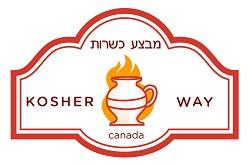
This educational enrichment program is made possible by Tzivos Hashem Canada
Please gather together your household and click on the topics below.
Kosher Food Utensils
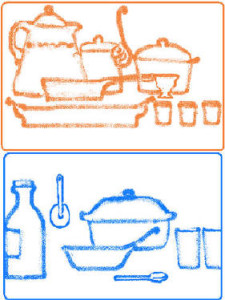
Most utensils used in food preparation and storage in a Kosher kitchen must be either Milk-designated or Meat-designated. They should be distinguishable and stored separately in order to minimize the chance of a mix up. Though many non-kosher utensils may be made kosher through boiling, we do not re-kosher utensils from dairy to meat use, or vice versa.
There may also be a neutral set of utensils for “Pareve” foods, that will allow non-meat and non-dairy foods to be prepared in them which can be later eaten with either type of foods. the Pareve utensils, however must be kept and washed separately from both the meat and dairy dishes in order to retain their neutrality.
New Utensils
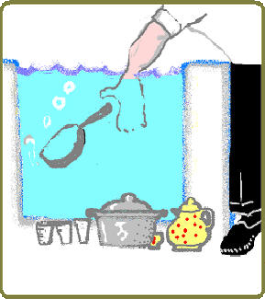
New metal and glass food utensils are to be immersed in a body of water called a Mikva. Glazed earthenware “china” must also be immersed because of the glazed coating.
A mikva is a natural collection of rain or underground water. One should use a certified kosher mikva built for immersion according to Torah specifications. Although there are natural bodies of water that are kosher for mikva, a competent Rabbinic authority should be consulted prior to immersion in them.
A utensil must be immersed completely in the water, all at once. The best way to do that is to let go of it in the water. If the mikva is too deep, a laundry hamper can serve as a net inside the mikva, where each utensil may be dropped into it separately. After several utensils have been dropped in to the net or hamper, they can all be pulled out at once by lifting the hamper out of the water. Care must be taken not to “plop” the utensil in the water, as the bubbles may compromise its complete immersion. Bottles and cups must be turned right side up for immersion, so that they may be filled completely with water.
A mikva immersion is required in order to ritually cleanse an object before its assimilation into the Jewish environment. Therefore, a utensil fashioned by a Jewish craftsman does not require mikva immersion.
*note- Pots and pans, manufactured outside of the United States and Canada,are often coated with a shiny substance that has non-kosher ingredients. They should be purged with boiling water in order to Kosher them.
Used Utensils
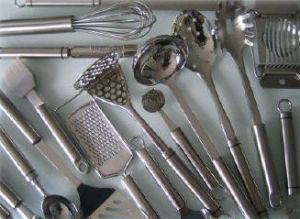
Kosher Dishwashing
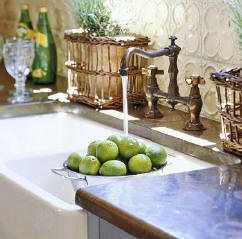
The absolute, best for a kosher kitchen is two separate sinks where meat dishes will be washed separately from dairy. The next best is a double sink where the dairy side can be covered by a metal or plastic cover to protect it from sprayduring the meat dish washing and vice versa. One should avoid pouring boiling hot liquids into a double sink after meat or dairy cooking. It is advisable that metal “grids” or baskets should line the bottoms of the double sink to keep the dishes just a touch above the metal of the sink itself. Separate scrubbing pads and drying towels are to be used for each set of dishes. A dish washer may be used for one set of dishes only. It can only be either meat or dairy designated.
The Kosher Refrigerator

Kosher Milk
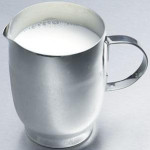
Kosher Cooking
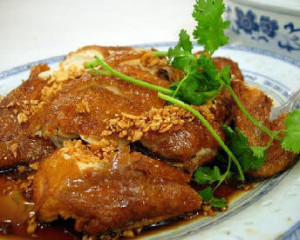
Stovetop cooking in a kosher kitchen requires coordination. Meat and dairy should not be prepared at the same time on the stove to prevent cross spills.
Electric stove elements can be turned on for several minutes until red hot to purge them between meat and dairy cooking.
Alternatively, it is a practice in some homes to designate elements as meat and dairy. The unused elements of the opposite genre would be covered to protect them from cooking spills. This is necessary, however in a case of a clay-top stove top to cover the glass over the unused elements. Care should be taken not to place cooking utensils on the glass between the elements, since that area would be considered a mixture of opposites.
In a case of a gas stove, the designated milk grates may be covered as well during meat cooking, and vice versa, or taken off altogether.
Fish and Meat For health reasons, fish and meat are not cooked or eaten together. Though fish by itself, may be cooked in meat containers, care should be taken with spices or sharp vegetables prepared along with the fish . The powerful sharpness of the spices will serve to bring out the meat presence from the cooking container, thus putting meat and fish together.
To allow the spice/fish preparation, some will use a fish-only frying pan or pot as part of their meat utensils
Jewish Cooking and Baking
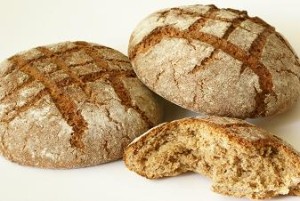
Any certified kosher establishment should have a mashgiach (representative of a kosher certifying body) on the premises, whose job it is to guarantee a standard of Kosher of the organization that he represents.
Kosher Eggs
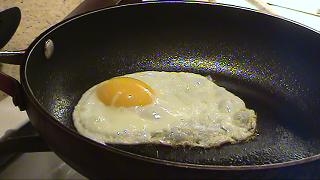
The first requirement for eggs is that they must be from a kosher type of bird. Chicken eggs are the most popular example. Eggs must be also checked for blood spots by opening them while raw and looking to see if there is a blood spot of any size. The presence of blood indicates that the egg is not kosher and must be discarded. Hard boiled eggs are checked after they are prepared for black points. A black point indicates that there was a blood spot on the egg. Brown eggs as well as free running eggs may often contain blood spots.
Checking for Insects in Vegetables
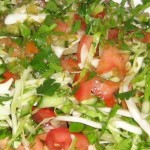
Vegetables and fruits should be checked for bugs and/or worms before preparing or consuming them. There is a prohibition in the Torah of eating insects. As it says in Vayikra 11, 41-44: Do not disgust your souls with all manner of crawling things and do not defile yourselves…” There are three categories of prohibitions against bugs in the Torah. They are winged insects, crawling insects and water insects.
The following video should help in order to identify various types of insects commonly found in lettuce. One should however develop experience in identifying insects with the help of a knowledgeable guide or Rabbinic authority.
Kosher Grilling
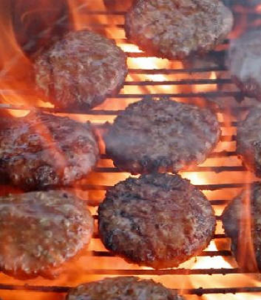
Obviously kosher barbecuing has its specific set of guidelines. For grilling dairy products, a separate dairy designated barbecue is necessary. Meat and poultry, however, may be grilled together at the same time in a meat designated barbecue.
Meat and fish, are not to be grilled together at the same time on the same barbecue. See also kosher cooking. One should make sure that the barbecue is completely clean between meat and fish grilling. It is also preferable to use a separate fish designated grill rack for grilling fish.
Sharp and Spicy
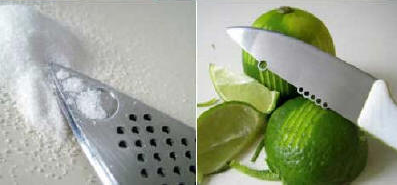
It is advisable that in every kosher kitchen, there is a knife that is used only for vegetables. Many vegetables are spicy and will absorb the taste that is in the knife. For example, if garlic is chopped with a milk-designated knife, that garlic can be used with milk dishes only. Using a vegetable only knife, there is a choice with which genre of food it may be used.
One should have two sets of salt/pepper shakers, a meat and a dairy one.
They and other spices should not be administered directly over steaming hot foods. Rather, they should be first shaken onto a spoon or a knife, and than over the pot.
The Kosher Mixup
HEAT.
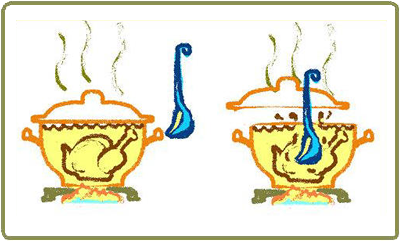
Heat mixes and draws taste of food into the walls of the cooking utensils involved in it’s preparation. Taste of milk, will be reabsorbed into a meat utensil through cooking. For example, if one stirs a pot of boiling chicken soup with a milk-only spoon, there is an exchange of tastes through the hot liquid. The mixture of absorption of milk and meat tastes is facilitated by heat.
In case of a mix up due to heat, the general rule is 1 to 60. If there is sixty times more meat than milk, then the milk taste is nullified. This formula can only be applied after the fact. One is not to create a mixture to begin with that is from forbidden ingredients. There are other conditions. In any case of a mix up a competent Halachic authority should be consulted.
SPICE.
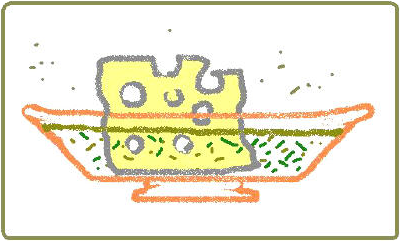
Spice will do the same transfer of taste as heat. The process is longer. it will take 18 minutes. A cold piece of cheese that sits in a meat-designated vinegar bowl for 18 minutes or more will absorb the meat taste of the bowl through the spicy vinegar. The taste of the cheese will also become absorbed into the bowl.
SOAKING.
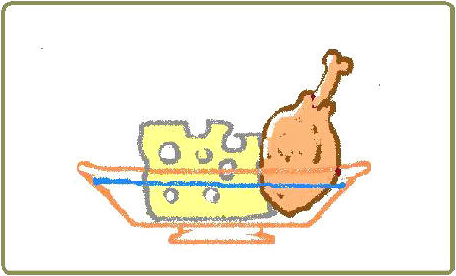
Leaving a something to soak overnight will have the same effect as cooking. If. for example one leaves a piece of meat together with a piece of cheese soaking in a bland liquid overnight, this will make the container, as well as the products not kosher
